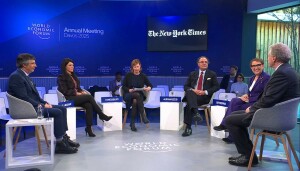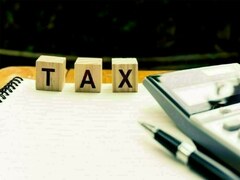ARTICLE: As lockdowns ease globally oil demand has picked up, causing in turn a bounce-back in prices of both Brent crude and WTI (West Texas Intermediate). On April 21, 2020, both of them had crashed, whereby Brent stood at $ 19.33 a barrel, while WTI had slipped to even lower levels at $ 11.57 a barrel. By this Tuesday (June 16), Brent had more than doubled to $ 40.96 a barrel, while WTI price had more than tripled to $ 38.38 a barrel. Having seen this recovery, the oil sector still has a lot of worries. According to Bloomberg, "But at around $41 a barrel, it's still down 37% this year, putting huge pressure on producers globally."
In this regard, the Wall Street Journal (WSJ) indicated that "Global oil demand will rebound next year as the world emerges from the coronavirus pandemic, but recovering to pre-crisis levels may take a couple of years, the International Energy Agency [IEA] said. Fuel use around the world will remain 2.5% lower next year than in 2019, largely because of the dire situation of the aviation sector, the Paris-based agency said in its first detailed assessment of 2021."
The rise in oil prices owes both to a demand increase, and also because of supply cuts by both OPEC+ group and non-OPEC producers. The oil supply cuts were hard to come by - and became an important reason besides the fall in demand due to the pandemic - because oil producers had been investing heavily over the recent few years to increase the supply of oil, whereby supply had increased from 96.4 million barrels a day in 2016, to 99.8 million barrels a day (mb/d) in 2019.
In the wake of the pandemic, according to IEA's Oil Market Report for June 2020, "...record output cuts from OPEC+ and steep declines from other non-OPEC producers saw global oil production fall by a massive 12 mb/d in May. In addition to a 9.4 mb/d decline in OPEC+ supply last month, output from non-OPEC countries outside the deal has fallen by 4.5 mb/d since the start of the year. To further speed up the market rebalancing, OPEC+ decided on 6 June to extend their historic output cut of close to 10 mb/d through July."
With regard to supply cuts by Saudi Arabia, Bloomberg reported: "The world's biggest oil exporter is hitting the brakes in developing some of its crude and natural gas deposits, idling two offshore drilling rigs as the coronavirus batters energy use. State-run producer Saudi Aramco has suspended work at the two platforms for about a year, according to filings from the contractors. The producer is also delaying a related $18 billion oil and gas expansion project by at least six months, according to people with knowledge of the situation. [However,] Aramco declined to comment on the status of the rigs or the project."
Hence, after the high of 2019 at close to 100 mb/d, global oil supply has come down significantly to 91.7 mb/d. According to the IEA, in the wake of rising demand, supply is expected to increase to 97.4 mb/d; yet still lower than the pre-crisis level of 99.8 mb/d. Moreover, the recovery in the sector depends on a strong assumption that there will be no second wave of Covid-19. Also, the recent buoyancy in the price levels may also see a downward tick as some of the countries in the global south, including Pakistan, have seen an upsurge in Covid-19 infection and death rates. Moreover, supply cuts may not therefore be enough if the situation of Covid-19 worsens once again and damages demand; chances of which are not minimal, and probabilities will remain high until at least a suitable vaccine become commercially available on a mass scale.
These risks and realities indeed put the recent recovery in oil markets on fragile grounds. It is therefore likely that both Brent and WTI may fall from the recent highs sooner than later. In terms of demand for oil, WSJ highlighted IEA's analysis as in the following words: "While it will climb by 5.7 million barrels a day next year, the average of 97.4 million a day will remain 2.4 million barrels a day below 2019 levels. Demand may not return to 100 million barrels a day until 2023, Neil Atkinson, the IEA's head of oil markets and industry, said in a webinar after the release of the report."
Unfortunately, Pakistan as a net oil importer, and whose energy production relies heavily on furnace oil, has not been able to take any significant advantage of the crash in oil prices, where the fall began as far back as three months ago. Firstly, there was an issue of appropriate storage capacity to cash in on the windfall gains in the wake of the pandemic. Secondly, the government reportedly delayed moving towards a hedging policy to obtain insurance that helped lock-in better futures. Hopefully, by now they have been able to do it. Thereafter, rather than passing benefit of oil price crash on to masses, petroleum levy was significantly increased. Hopefully, revenue from that is used to finance much-needed lockdowns, and not for bailing out inefficiency of the electricity sector and PSEs. Moreover, it is hoped that the fall in price of furnace oil should also be reflected in reduced tariffs for consumers. Currently, local supplies of oil to consumers stand artificially choked by cartels in the oil sector.
All though the window of opportunity has closed a little, given the fragility of the market for many more months at least, prices may likely take at least more than a year to recover to a pre-crisis situation. What has happened up till now should constitute an embarrassment for the government in terms of both governance and planning, which certainly need to change without any further loss of time.
(The writer holds PhD in Economics degree from the University of Barcelona, and previously worked at International Monetary Fund. He tweets @omerjaved7)
The writer holds a PhD in Economics degree from the University of Barcelona, and has previously worked at the International Monetary Fund. His contact on ‘X’ (formerly ‘Twitter’) is @omerjaved7

























Comments
Comments are closed.